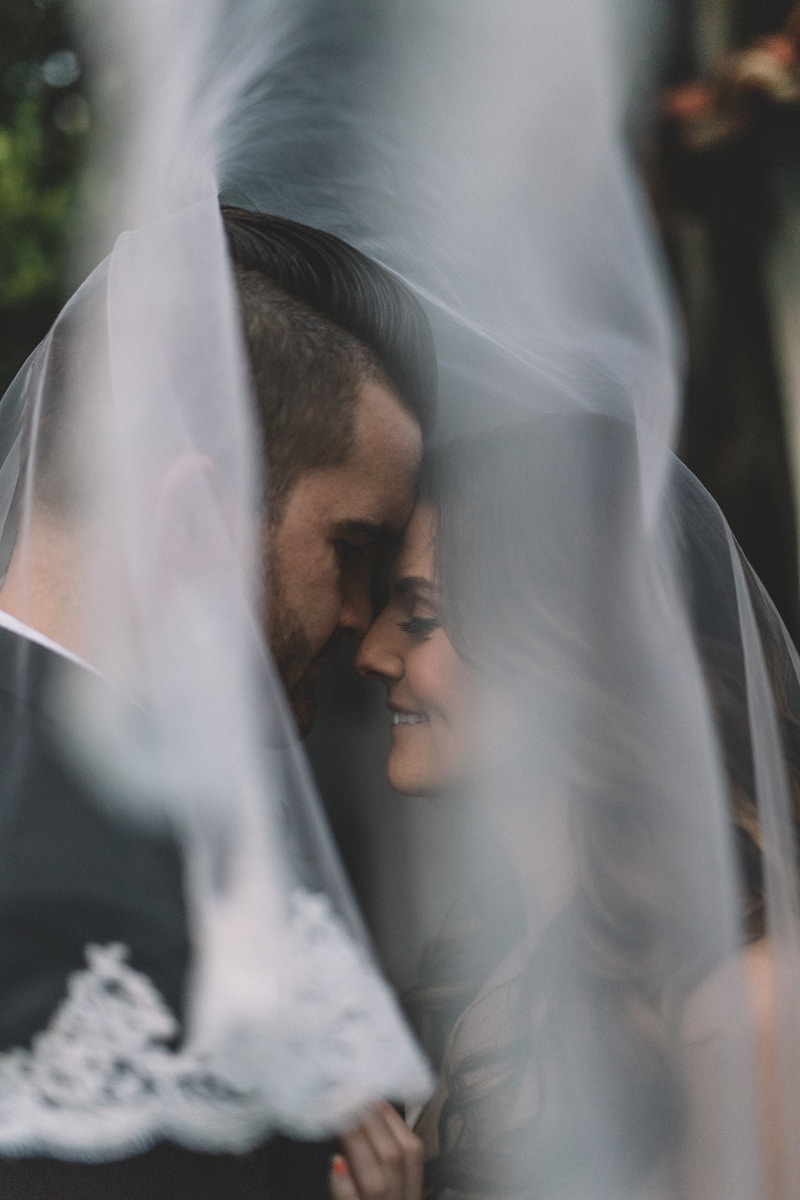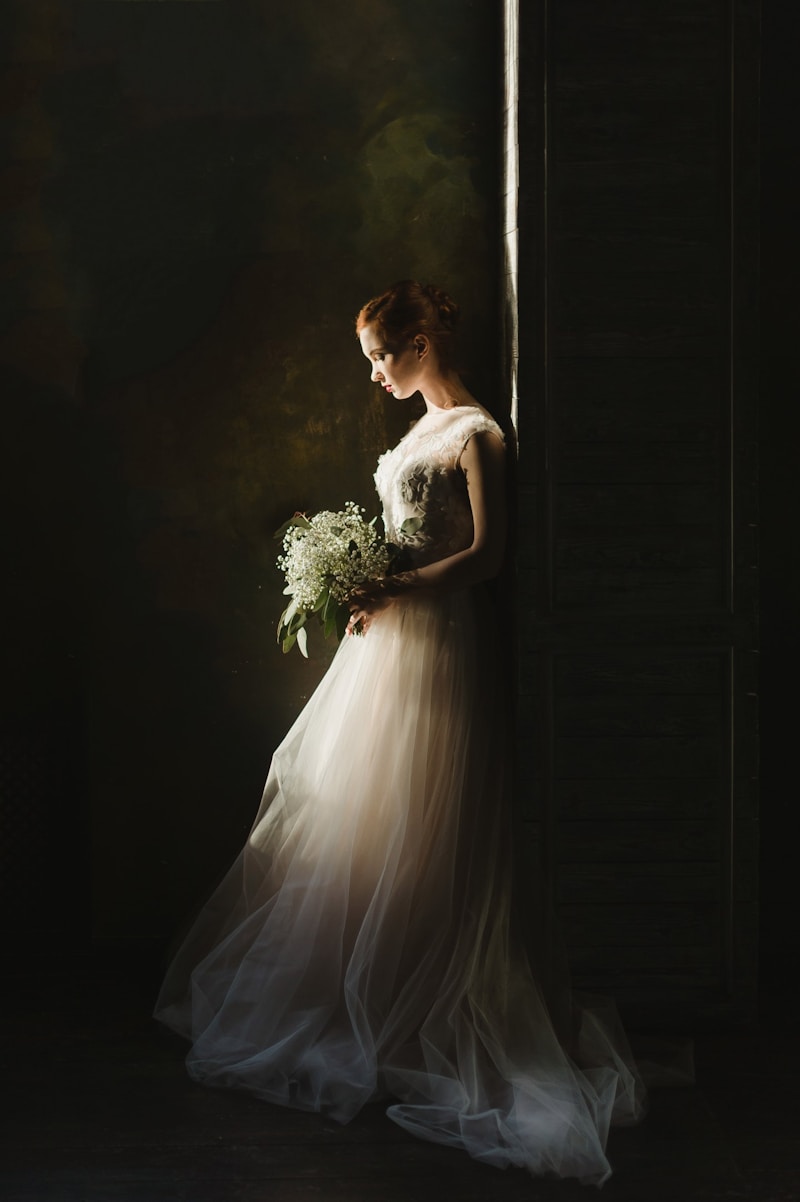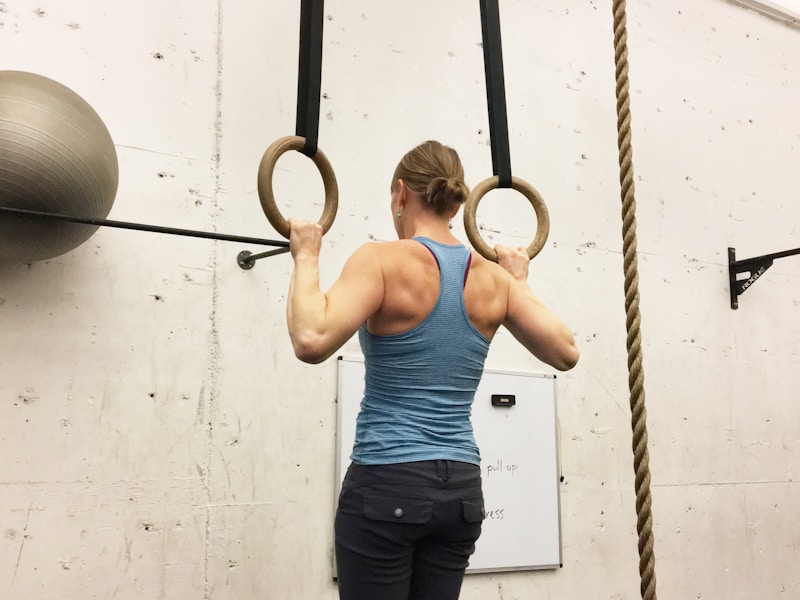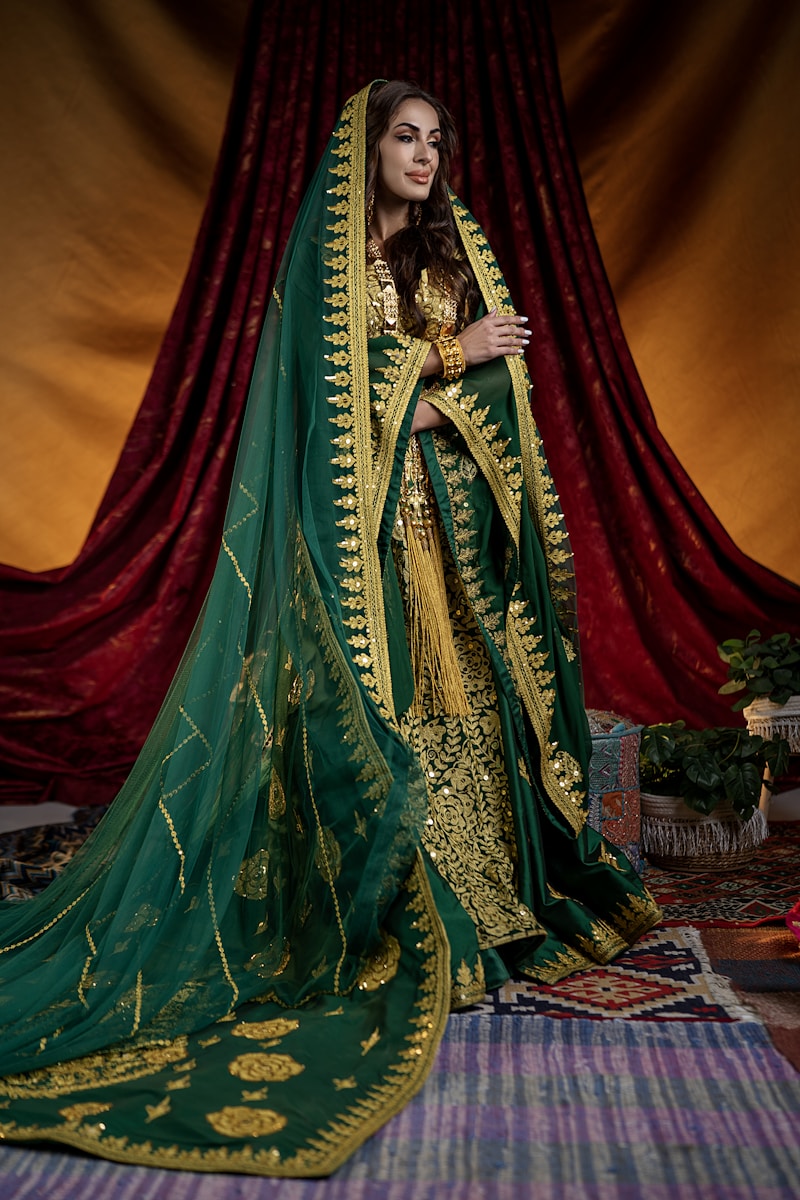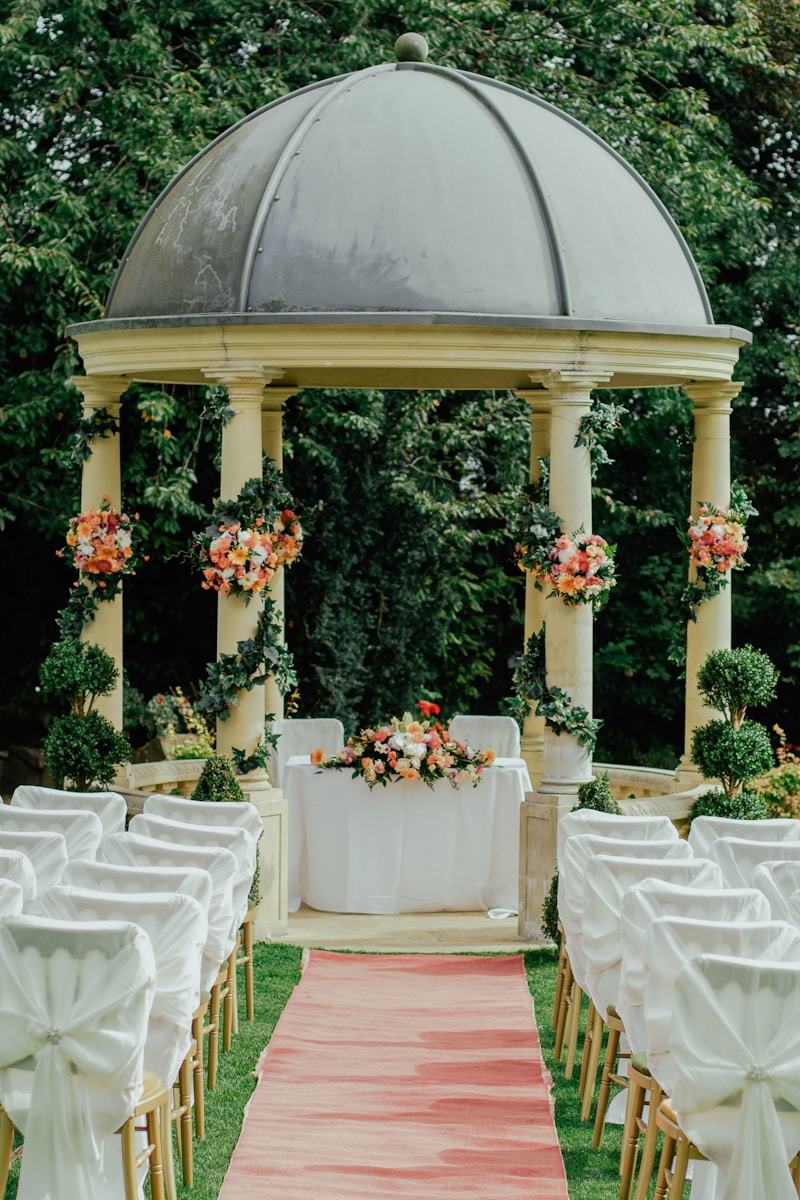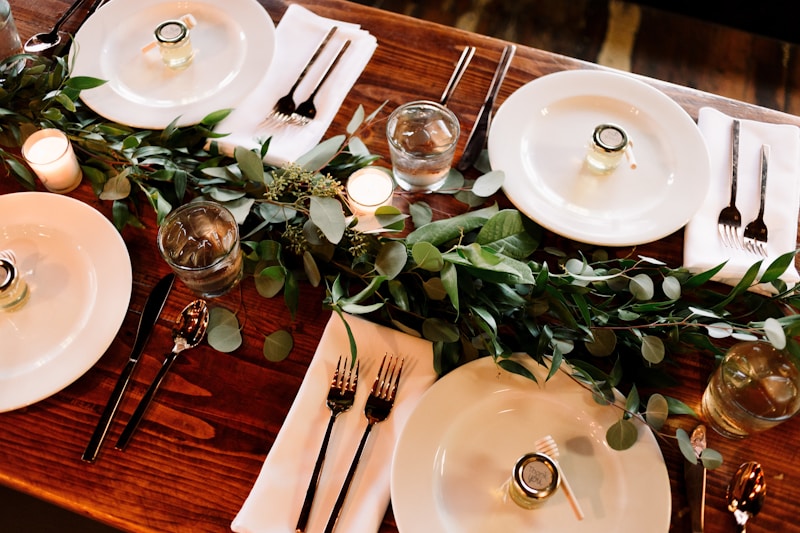Mastering Strategic Styling for Figure Flattery: Your Ultimate Guide
When it comes to fashion, the idea of dressing well revolves around one central concept: feeling confident in your skin. Strategic styling for figure flattery is an art that focuses on enhancing one’s natural shape and bringing out the best features while downplaying others. This comprehensive guide aims to arm you with the necessary knowledge and skills to achieve that ideal look. By employing strategic styling techniques, you can accentuate your figure in a way that not only flatters your silhouette but boosts your confidence as well.Understanding Your Body TypeBefore diving into the world of strategic styling, it is crucial to understand your body type. Body types can generally be categorized into several categories, including the hourglass, pear, apple, rectangle, and inverted triangle shapes. Knowing your body shape allows you to choose clothes that enhance your natural curves.Body ShapeCharacteristicsStyling TipsHourglassDefined waist with equal bust and hip measurementsOpt for fitted dresses and high-waisted bottoms.PearWider hips compared to bustCreate balance with A-line skirts and embellished tops.AppleWider bust with slimmer hipsChoose empire waist dresses and structured blazers.RectangleSimilar measurements across bust, waist, and hipsAdd curves with ruffle details and belted looks.Inverted TriangleBroad shoulders with narrower hipsBalance the look with flared or wide-legged bottoms.Choosing the Right Fabrics and ColorsWhen it comes to strategic styling for figure...
Mastering Layering Techniques for Added Comfort in Fashion
The Art of Layering: Your Guide to Added ComfortLayering techniques have become a key aspect of modern fashion, offering not only style but also functionality and comfort. In a world where personal expression meets practical needs, mastering layering can transform your wardrobe into a versatile collection fit for any situation. This article explores various layering techniques, their benefits, and tips on how to incorporate them into your style for added comfort.Why Layering MattersLayering is not just a trend; it’s a strategic approach to dressing. By combining different pieces, you can adjust to varying temperatures, create depth in your outfit, and express your personal style. Here are some compelling reasons why layering techniques are essential: Weather Adaptability: Layering allows you to bundle up during colder months and peel off layers when temperatures rise. Versatility: A well-layered outfit can transition easily from day to night or from casual to formal with little effort. Style Expression: Layering can create the illusion of different silhouettes, helping you reinvent your looks.Basic Layering TechniquesTo effectively use layering techniques, it's vital to understand the basics. Below are foundational strategies that can enhance your comfort and style.1. The Base LayerThe base layer is crucial as it sits directly on your skin. It should be made from breathable materials that wick moisture and ensure comfort. Consider options like: Lightweight cotton ...
Ultimate Guide to Heat Retention for Seasonal Bridal Wear
Introduction to Seasonal Bridal Wear When planning a wedding, every detail matters, from the venue and décor to the bridal gown. One important aspect that often gets overlooked is heat retention in bridal wear, especially for seasons with colder climates. As winter or early spring weddings become increasingly popular, understanding how to choose the right materials and designs becomes essential. In this article, we will explore the concept of heat retention for seasonal bridal wear and how brides can stay warm while looking stunning on their special day. Why is Heat Retention Important for Bridal Wear? Bridal gowns are traditionally associated with elegance and style, but they also need to be functional, especially in colder seasons. Here are a few reasons why heat retention should be a priority for brides: Comfort: Brides want to look beautiful but also need to feel comfortable throughout their wedding day. A gown that keeps warmth can enhance the overall experience. Durability: Fabrics with good heat retention not only keep the wearer warm but can often withstand the elements better, ensuring the gown maintains its integrity. Style Versatility: Choosing the right materials can allow for versatile styles, including long sleeves, heavier fabrics, and layering options that look chic while providing warmth. Materials That Retain Heat When selecting a bridal gown for colder seasons, certain materials can significantly improve heat retention. Here’s a closer look at...
Preparing for Your Wedding Dress Fitting: A Comprehensive Guide
Getting ready for your wedding day is one of the most exciting times in your life, and selecting the perfect wedding dress is a major part of that process. Understanding how to prepare for your wedding dress fitting will not only enhance the experience but will also ensure that your dress fits like a glove. This article offers a detailed guide to help you through this crucial step in your wedding planning journey. Why Is a Wedding Dress Fitting Important?Before diving into the preparation tips, it’s essential to recognize why a wedding dress fitting is significant. The fitting is your opportunity to interact with your dress, assessing everything from the fabric to the overall structure. It’s not just about trying on the dress; it’s about making adjustments, discussing your vision, and ensuring that you feel beautiful.Key Steps to Prepare for Your Wedding Dress FittingHere are some vital steps that will make your wedding dress fitting more productive:1. Choose the Right UndergarmentsYour undergarments play a pivotal role in how your dress fits. A good bra, seamless panties, and shapewear can dramatically alter the way your gown looks on you. Opt for undergarments similar to what you plan to wear on your wedding day.2. Have Your Bridal Shoes ReadyIf you have already selected your wedding shoes, bring them along to the fitting. This is crucial, as the height of your shoes will affect the length and overall fit of your dress. If your wedding shoes are new, wear them around the ho...
Emphasizing Different Body Types: Celebrating Diversity in Fashion and Fitness
Understanding the Importance of Body DiversityIn a world that has often struggled with unrealistic beauty standards, emphasizing different body types is more important than ever. Body diversity means recognizing and celebrating the wide range of human shapes and sizes, allowing individuals to feel comfortable and confident in their own skin. This article will explore the significance of body diversity in various aspects, including fashion, fitness, and societal norms.The Evolution of Beauty StandardsTraditionally, media and fashion industries have often portrayed a narrow ideal of beauty, predominantly featuring slim and toned models. However, as discussions around gender, race, and identity have evolved, so has the understanding of what constitutes beauty. The focus is gradually shifting towards a more inclusive representation of different body types, encouraging brands and individuals to embrace diversity.1. The Fashion Industry's RoleThe fashion world is one of the most influential in terms of setting beauty standards. By emphasizing different body types, brands can appeal to a broader audience. Additionally, showcasing a variety of body types boosts consumers' self-esteem and encourages them to experiment with their personal style.Major Fashion Brands Embracing DiversityImpact on Society1. Savage X FentyPromotes body positivity and self-love2. AerieEncourages women to embrace their authentic selves3. ASOSOffers a wide range of sizes, catering to various body types4. Chrom...
Cultural Considerations in Bridal Fit: A Comprehensive Guide
When it comes to bridal fashion, one size does not fit all. Each bride brings her unique cultural background and personal preferences to the aisle, making cultural considerations in bridal fit not only important but essential. In this article, we will explore how various cultures influence bridal gown fitting and styling, ensuring brides feel both beautiful and comfortable on their special day.Understanding Cultural Significance Every culture has its own beliefs and traditions surrounding weddings, often reflected in attire. Understanding these cultural nuances is crucial for bridal businesses, designers, and consultants. Specific styles, colors, and fabrics may hold significant meaning, making it essential to acknowledge these factors during the fitting process. Key Cultural Factors Affecting Bridal Fit Cultural FactorImpact on Bridal Fit Body Image and SizeVaries by culture; some admire curvier figures while others prefer slim silhouettes. Modesty RequirementsSome cultures prioritize modesty, affecting the choice of neckline and sleeve length. Traditional EmbellishmentsUse of specific fabrics or designs that symbolize cultural heritage can affect the fit. Color SignificanceColors can carry different meanings in diverse cultures, influencing gown choice and fit. Body Images and Sizes Across CulturesBody image is a significant cultural consideration in bridal fit. In South Asian cultures, for example, a fuller figure may be celebrated, leading brides to choose dresses that...
Ensuring Ease of Movement in Wedding Attire: The Ultimate Guide
IntroductionPlanning a wedding is a thrilling experience filled with many choices, and one of the most important decisions you'll make is choosing the right attire. While aesthetics are undoubtedly important, ensuring ease of movement in wedding attire can sometimes be overlooked. In this article, we’ll explore how comfort and mobility can enhance your wedding day experience, creating a joyful atmosphere where you can fully enjoy your special moments.The Importance of Comfort and MobilityWhen it comes to wedding attire—whether it’s a bridal gown, groom’s suit, or outfits for the wedding party—comfort often takes a back seat to style. However, ensuring ease of movement is crucial for several reasons: Enhanced Enjoyment: A comfortable outfit allows you to enjoy your day without constantly adjusting your clothing, whether on the dance floor or during the ceremony. Photogenic Freedom: Movement can be captured more naturally in photographs if you feel comfortable. The best wedding photos often feature candid moments where the couple and guests are at ease. Longevity of the Ceremony: Weddings can be long events. Ensuring that you can move freely can help you endure hours of standing, walking, and dancing.Key Factors to Consider for Ease of MovementMaking an informed choice about wedding attire involves a few key considerations:1. Fabric ChoiceThe fabric you choose plays a significant role in the comfort of your wedding attire. Here are a few options to consider:Fabric Type...
Essential Fit Guides for Custom-Made Dresses: Your Ultimate Guide to Perfect Tailoring
When it comes to finding the perfect dress, nothing beats the allure of a custom-made garment. Custom dresses not only reflect your unique style but also fit your body shape like a glove. However, navigating through the process of getting a custom dress can be overwhelming, especially if you are unsure about the right fit. In this article, we’ll delve into essential fit guides for custom-made dresses, answering common questions and providing tips to ensure your personalized piece is everything you dreamed it would be.Understanding the Importance of Fit in Custom-Made DressesThe fit of a dress can make or break its overall aesthetics. A well-fitted dress enhances your natural silhouette, making you feel confident and glamorous. Poor fit, on the other hand, can lead to discomfort and even embarrassment. Therefore, understanding the key aspects of fit becomes imperative when considering a custom-made dress.1. Key Measurements for an Ideal FitTo create a stunning custom-made dress, you’ll need to provide several key measurements. Here are some of the most important measurements to take:MeasurementDescriptionBustMeasure around the fullest part of your bust with a soft measuring tape.WaistMeasure around the narrowest part of your waist, ensuring the tape is level and snug but not tight.HipMeasure around the fullest part of your hips, which is typically about 8 inches below your waist.Shoulder WidthMeasure from the edge of one shoulder to the edge of the other.Dress LengthMeasure fr...
Understanding Bridal Corsetry and Support Structures: A Comprehensive Guide for Modern Brides
Bridal Corsetry: An Essential Element of Wedding Attire Bridal corsetry and support structures play a pivotal role in shaping the perfect bridal silhouette. These specialized garments not only provide support but also enhance the overall aesthetics of a wedding dress. In this article, we will explore the importance, types, trends, and maintenance of bridal corsetry, offering essential tips and insights for brides-to-be. The Importance of Bridal Corsetry Bridal corsetry and support structures are designed to create a flattering shape while offering the necessary support to keep the dress in place throughout the wedding day. Here are some key reasons why they are indispensable: Enhancing Silhouette: Corsetry helps to accentuate the waist and enhance the bust line, creating an hourglass figure. Posture Improvement: A well-fitted corset promotes better posture, allowing the bride to carry herself with confidence. Comfort and Support: Modern bridal corsets offer an excellent balance of support and comfort, often incorporating breathable fabrics. Dress Structure: They provide the necessary structure to support the weight of intricate fabrics, layers, and embellishments. Types of Bridal Corsetry and Support StructuresBridal corsetry can come in various forms, each designed to fulfill specific functions while ensuring the bride looks her best. Below are common types: Type Description Overbust Corsets These cover the bust and extend to the waist, providing ample support. Ideal ...
Balancing Comfort and Style in Bridal Gowns: The Ultimate Guide for Modern Brides
Your wedding day is one of the most important days of your life, and selecting the perfect bridal gown is a significant part of that experience. However, modern brides face the challenge of balancing comfort and style in bridal gowns. This article will explore how to make the best choice while keeping up with current wedding trends, and provide practical advice to ensure you look stunning while feeling great.Understanding the Importance of Comfort in Bridal GownsWhen searching for a bridal gown, comfort must be a priority. A wedding day can span several hours, filled with various activities such as walking down the aisle, dancing, and greeting guests. If your wedding dress is uncomfortable, it can affect your mood and enjoyment. Here’s why comfort matters: Movement: Opt for designs that allow ample movement without restricting your body. Temperature Regulation: Choose fabrics that breathe well, especially for outdoor summer weddings. Confidence: When you’re comfortable, you exude confidence, making you appear even more beautiful on your big day.Key Factors to Consider When Balancing Comfort and StyleFinding a bridal gown that reflects your personal style while ensuring comfort involves considering several aspects:1. Fabric ChoiceThe fabric of your wedding gown plays a pivotal role in both comfort and style. Some popular options include:FabricComfort LevelStyle AppealSilkHighElegant and timelessChiffonHighFlowy and lightTulleMediumRomantic and whimsicalSatinVariableLu...
Beyond Size: The Art of Wedding Dress Tailoring
Understanding the Importance of Tailoring in Wedding DressesWhen it comes to weddings, one of the most significant elements that brides contemplate is their wedding dress. However, the perfect dress isn’t just about style or fabric; it’s about fit. This is where the art of wedding dress tailoring comes into play. Tailoring is not merely a necessary action; it is an art form that enhances the beauty of the dress and, in turn, the bride who wears it.Why Tailoring MattersA wedding dress that is not tailored appropriately can lead to discomfort, awkwardness in movement, and an overall less-than-perfect look on one of the most important days of a person’s life. Of course, many bridal shops offer dresses in a range of sizes, but it is vital to understand that these sizes do not fit every body shape perfectly. Here are a few reasons why tailoring makes a significant difference:Enhanced Fit: No two bodies are the same; tailoring allows the dress to fit each bride's unique dimensions.Comfort: A well-fitted dress ensures that the bride feels comfortable and confident throughout the event.Style Personalization: Tailoring allows for modifications that can turn a good dress into a stunning one by adjusting various elements like neckline, train length, and silhouette.Confidence Boost: A perfectly tailored dress can greatly enhance a bride’s confidence, which is essential for having a great wedding experience.Common Questions About Wedding Dress TailoringBefore diving into the specifics of ...
Finding a Fit Expert for Your Big Day: The Ultimate Guide
Planning a wedding is no small feat, and one of the most important aspects of any wedding is the attire of the bride, groom, and the entire wedding party. Finding a fit expert for your big day is essential to ensure that everyone looks their best. Whether you are searching for a tailor, a stylist, or a coordinator, this guide will help you navigate the process of finding the right fit expert to make your special day perfect. Understanding the Role of a Fit Expert A fit expert plays a crucial role in the wedding planning process. They are responsible for ensuring that all participants look stunning in their outfits, whether it be a wedding dress, tuxedo, or bridesmaid gown. Their expertise can save you from the common pitfalls of ill-fitting garments, which can detract from the beauty of your day. Some responsibilities of a fit expert include: Taking precise measurements Providing style advice based on body type Coordinating fittings and alterations Ensuring timely delivery of outfits Checking for any last-minute adjustments Types of Fit Experts You May Need When looking for a fit expert, you may encounter various types. Each specializes in different areas, so it's important to know who you need for your big day: Type of Expert Description Tailor Focuses on alterations for wedding dresses and suits, ensuring perfect fit and style. Stylist Provides fashion advice and suggests appropriate attire for the wedding party. Bridal Consultant Of...
Creating Positive Fitting Experiences for Brides: A Guide to a Joyful Journey
IntroductionWhen it comes to planning a wedding, every bride dreams of finding the perfect dress. However, the journey toward that dream dress can be daunting. A positive fitting experience is vital in ensuring that brides not only find a dress they love but also create wonderful memories along the way. This article explores how to create positive fitting experiences for brides, focusing on key aspects such as environment, staff engagement, and personalization.The Importance of Positive Fitting ExperiencesBrides often feel a mixture of excitement and anxiety when stepping into a bridal shop. The fitting experience can significantly influence their overall wedding planning journey. Here are some crucial reasons why creating positive fitting experiences should be a priority: Boosting Confidence: A pleasant fitting experience can help brides feel more confident in their choices, making them excited about their wedding day. Creating Lasting Memories: The dress fitting is often a cherished moment for brides and their loved ones, contributing to memories they'll treasure forever. Encouraging Word-of-Mouth: Happy brides are likely to share their positive experiences with friends and family, bringing more clients to the business.Key Elements for Positive Fitting ExperiencesCreating a supportive and enjoyable fitting environment involves several crucial elements. Let’s break them down:1. Welcoming AtmosphereAn inviting atmosphere can enhance the overall experience for brides....
Dressing to Enhance Your Natural Curves: The Ultimate Guide
In today's fashion-forward world, dressing to enhance your natural curves has become more than just a trend; it is a celebration of body positivity and self-expression. The right clothing can accentuate your best features, boost your confidence, and help you showcase your unique style. Whether you're looking for everyday outfits or something more formal, this guide will delve into the best strategies and tips for dressing to enhance your natural curves.Understanding Your Body ShapeBefore you can effectively dress to enhance your curves, it’s essential to understand your body shape. Knowing whether you are an hourglass, apple, pear, or rectangle can significantly influence your fashion choices. Here's a brief overview:Body ShapeDescriptionHourglassCharacterized by a well-defined waist with balanced bust and hip measurements.PearWider hips and a narrower bust, creating a triangular shape.AppleBroader shoulders and bust with a less defined waist.RectangleSimilar measurements in the bust, waist, and hips, lacking a defined waist.Wardrobe Essentials for Curvy FiguresOnce you've identified your body shape, it’s time to consider the wardrobe essentials that will help enhance your curves. Here are some must-have pieces:1. Tailored ClothingTailored clothing hugs your body in all the right places, creating a flattering silhouette. Invest in a well-fitted blazer or tailored trousers that nip in at the waist. These pieces create definition, helping to accentuate your curves while providi...
Secrets to Achieving a Flawless Bridal Fit
IntroductionEvery bride dreams of walking down the aisle in a dress that perfectly complements her figure, embodying elegance and confidence. A flawless bridal fit not only enhances your beauty but also boosts your self-esteem on one of the most important days of your life. In this article, we will explore the secrets to achieving a flawless bridal fit, from selecting the right dress silhouette to effective fitting techniques that accommodate your unique body shape.Understanding Your Body ShapeBefore you even step foot into a bridal shop, it's essential to understand your body shape. Different silhouettes work better with different body types. Here are some common body shapes and their corresponding bridal dress recommendations:Body ShapeRecommended Dress SilhouetteA-LineFlowing silhouette that flares from the waist; accentuates the waist while flowing over the hips.HourglassMermaid or fitted styles that highlight curves; the neckline can be a sweetheart or off-the-shoulder.RectangleBall gown or shift dress to create a flattering shape; belts or sashes can add emphasis to the waist.AppleEmpire waist or A-line style; look for dresses that draw attention away from the midsection.PetiteShorter hemlines or high-low styles; vertical lines can elongate the appearance of the body.Choosing the Right FabricThe fabric of your wedding dress plays an integral role in how it fits and flows. Here are a few popular materials and their characteristics:Silk: Luxurious and soft, silk drapes be...
Navigating Fit-Related Challenges: A Comprehensive Guide to Overcoming Obstacles in Your Fitness Journey
Understanding the Context of Fit-Related ChallengesIn today’s fast-paced world, individuals often encounter various fit-related challenges that can hinder their fitness journey. These challenges can range from lack of motivation and time constraints to physical limitations and dietary issues. Overcoming these obstacles can be daunting; however, with the right strategies, it's entirely possible to navigate through them effectively. In this article, we will discuss the common fit-related challenges and provide actionable solutions, ensuring you stay on track with your fitness goals.The Importance of Addressing Fit-Related ChallengesUnderstanding and addressing fit-related challenges is crucial for achieving long-term health and wellness. Many people start their fitness journey with enthusiasm but may quickly falter due to various obstacles. By identifying these challenges early on, you can create a tailored approach that will help you overcome them and maintain motivation.Common Fit-Related ChallengesChallengeDescriptionPotential SolutionsLack of MotivationFeeling unmotivated to exercise regularly or stick to a meal plan.Set clear goals, find a workout partner, or hire a coach.Time ConstraintsDifficulty finding time to work out due to busy schedules.Incorporate quick workouts or opt for high-intensity interval training (HIIT).Physical LimitationsInjuries or health issues that restrict physical activity.Consult a healthcare professional for tailored exercises and adjustments.Die...
The Psychology of Body Image on Your Wedding Day
Weddings are often described as one of the most significant days in a person's life, filled with love, joy, and celebration. For many brides and grooms, the desire to look and feel perfect on their wedding day comes with immense pressure. This leads us to explore the complex and multifaceted issue of body image and its psychological implications on such a pivotal day. In this article, we will delve deep into the psychology of body image, particularly focusing on how it influences the experiences of individuals on their wedding day, the societal pressures surrounding it, and tips to foster a positive mind frame leading up to the big event.Understanding Body ImageBody image refers to an individual's perception of the aesthetics or sexual attractiveness of their own body. It encompasses how one feels about their body, how they perceive the way others see them, and their emotional responses to those perceptions. Body image can be positive or negative, with countless factors influencing this aspect of mental health and self-esteem.Influencing FactorsSeveral factors contribute to body image distortion, especially on significant occasions such as weddings. These factors include:FactorDescriptionSocial MediaPlatforms showcase idealized bodies, which can distort self-perception.Cultural NormsSocietal standards often dictate "ideal" body types, influencing personal perceptions.Family ExpectationsTraditions and familial pressure can heighten body image concerns.Dress and AttireChoosing ...
Essential Backup Plans for Unexpected Fitting Issues in Your Projects
In the unpredictable world of project management, ensuring every aspect is meticulously planned is vital for success. One common hurdle that professionals encounter is unexpected fitting issues. Whether you're involved in construction, interior design, or any field where precise measurements and fittings are essential, having a robust backup plan can save you time, money, and stress. This article explores effective strategies for dealing with unexpected fitting issues while ensuring smooth project execution.Understanding the Importance of Backup PlansBackup plans are critical in any project, especially when dealing with intricate fittings. Unexpected issues can arise due to various reasons such as incorrect measurements, material defects, or unforeseen environmental conditions. By anticipating these problems and formulating contingency strategies, teams can navigate challenges more efficiently.The Cost Implications of Fitting IssuesUnexpected fitting issues can lead to significant cost overruns. According to a report by the Construction Industry Institute, projects can experience budget increases of up to 20% due to unforeseen fitting challenges. Thus, having a clear plan becomes a financial necessity rather than just a precautionary measure.Potential Fitting IssuesEstimated Cost ImpactIncorrect Measurements+10-20%Material Defects+15-25%Weather-Related Delays+5-15%Design Changes+20-30%Common Unexpected Fitting Issues1. Measurement ErrorsOne of the most common unexpected fitti...
Understanding Wedding Dress Sizes: A Comprehensive Guide for Brides-to-Be
Introduction to Wedding Dress SizesSelecting the perfect wedding dress is a monumental part of preparing for one of the most significant days of your life. One crucial aspect that many brides encounter during their search is understanding wedding dress sizes. This article provides insights into the different sizing systems, tips for finding your perfect fit, and answers to frequently asked questions surrounding wedding dress sizes.Understanding Wedding Dress Sizes: A Global PerspectiveWedding dress sizes can vary drastically depending on the region and designer. In many Western countries, sizes are often based on a numerical system (e.g., size 6, 8, 10, etc.), whereas in some regions, sizes may be categorized using letters (e.g., XS, S, M, L). This can lead to confusion when brides are trying on dresses from various designers. Below is a brief overview of common sizing systems used in different parts of the world:RegionSizing SystemExample SizeUnited StatesNumerical (Even Sizes)6, 8, 10United KingdomNumerical (Even Sizes)8, 10, 12EuropeNumerical (French or Italian Sizes)34, 36, 38ChinaSize in Centimeters160/84A (160 cm tall, 84 cm bust)AustraliaNumerical (Even Sizes)8, 10, 12How to Determine Your Wedding Dress SizeDetermining your wedding dress size can be daunting, but it doesn’t have to be. Here are some essential steps to follow:1. Take Accurate MeasurementsBefore heading to the boutique, it’s crucial to know your measurements. You will need a measuring tape and a friend t...
Discover the Beauty of Size-Inclusive Wedding Gowns: A Comprehensive Guide
The Rise of Size-Inclusive Wedding GownsWeddings are a celebration of love, and every bride deserves to feel beautiful and confident on her special day. However, traditional bridal fashion has often overlooked the diverse body types of brides. Fortunately, the trend of size-inclusive wedding gowns is changing the landscape of bridal wear. This guide will take you through everything you need to know about size-inclusive wedding gowns, from styles and designers to tips for choosing the perfect dress.What Are Size-Inclusive Wedding Gowns?Size-inclusive wedding gowns refer to bridal dresses that cater to a wider range of body sizes and shapes, typically extending beyond the standard size range. While traditional bridal sizes often range from 0 to 12, size-inclusive collections can go up to size 30 and beyond. This inclusivity ensures that brides of all body types can find a dress that resonates with their personal style and fits beautifully.Why Size Inclusivity MattersIn an era that champions diversity and body positivity, size inclusivity in the bridal industry is essential for several reasons:Representation: Size-inclusive wedding gowns represent all brides, allowing everyone to see themselves in beautiful wedding attire.Confidence: Wearing a well-fitted gown can boost a bride’s confidence and enhance her overall experience.Variety: A more extensive range of sizes opens up a world of design possibilities for brides, making it easier to find a gown that reflects their unique ide...



